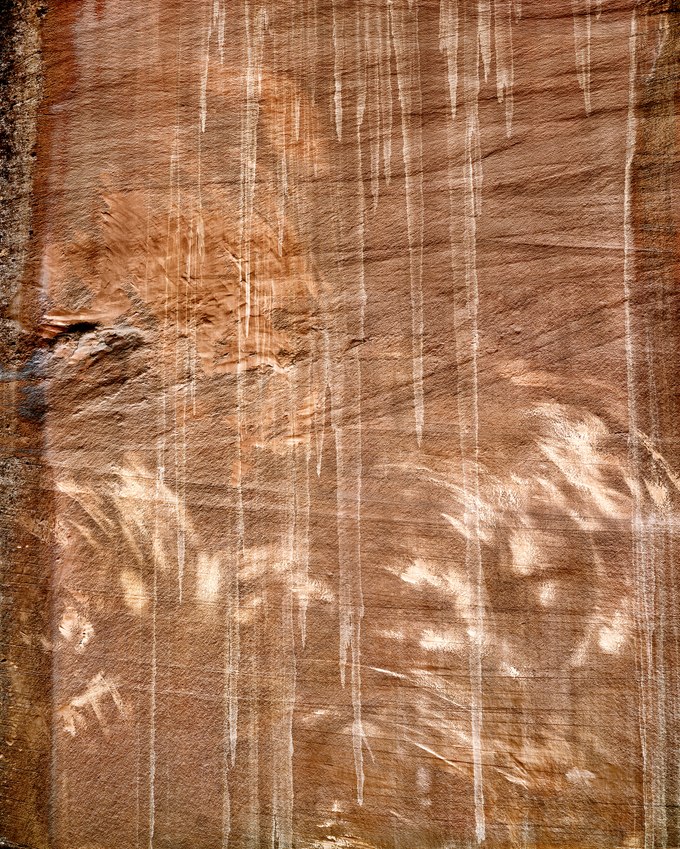"There is poetry in everything if you look closely enough," observed artist Cy Trombly. Ancient cliffs border central Utah's Escalante River. The sheer walls chronicle their geologic history, recorded in a palette of tones, colors, and textures on the smooth surface of Wingate Sandstone. Initially, I couldn’t grasp what was at play, trying to parse the complexity of one inscribed wall’s patterns. Underneath its surface markings, layers of once-shifting ancient dunes are outlined in wavy lines. Desert varnish darkens the left side of this wall through an accumulation of minerals and bacteria interacting with sunlight and water. Thin, pale vertical rain streaks leave delicate drip marks down the height of the wall.
Finally, petroglyphs – markings and incisions formed not by human hands but by natural forces – were elegantly scraped and engraved onto the cliff wall. I wondered, "How were these lightly brushed and darkly engraved gestures created?" Observing the dead trunks and limbs of cottonwood trees beneath the wall, I realized that the limbs and branches, swaying in the wind, had produced these marks. It was something I had never seen before.
The convex-curved wall, arching forward in height, intersected with the growing limbs and branches of a cottonwood tree. This effect recalled Twombly's pencil and chalk drawings. As the wind shifted them, the thinner branches lightly brushed against the surface, while the limbs and thicker branches engraved the rock. Whether they are branches as extensions of a tree or a hand as an extension of an artist's eye and mind, both naturally create sweeping marks. As Twombly observes, "I am not interested in straight lines. I am interested in curves, irregularities, and accidents."

